Teaching and Learning about the Holocaust where it Happened
By Annamaria Orla-Bukowska
Everything is different when one teaches about something in situ: teaching about Pearl Harbor in Hawaii, teaching about Gettysburg in Pennsylvania, and so on. So, too, it is one thing to talk, teach or learn about the Shoah in North America, and quite another to do so in Europe. Each and every country once occupied by the Third Reich needs to address the participation of its citizens in perpetrating, collaborating with, and witnessing the annihilation of Jewish compatriots. That noted, there is no country on the continent which has had to face this more than Poland. Practically innumerable within the country’s current boundaries are the marked and unmarked sites of persecution and death – the ghetto districts, mass graves, former labor and concentration camps, and all six of the former death camps. Moreover, at Pearl Harbor or Gettysburg we speak only of American citizens who perished there; in Poland we are paying respect not only to our own Jewish citizens, but also to the Jewish citizens of all German-occupied countries. Murdered on this soil were not only most of Poland’s Jews, but also the Jews of most of Europe – from Norway to France, from the Netherlands to Greece.
This means that, as James Young stated in his Texture of Memory, “In the aftermath of the Holocaust, much of Jewish life in Poland has become one long commemoration of the dead, transforming young Polish Jews and non-Jews alike into perennial caretakers and archivists.” This bestows an extraordinary responsibility upon Polish society today to do Holocaust education not only for its own citizens, but to facilitate it in situ for citizens from around the world. This is a unique experience upon which one American student from Pennsylvania reflected earlier this year:
“In class, we talked about the concentration camps before we went to tour Auschwitz. I knew that it would be sad, and I had heard about the things I would see there. I knew what happened there, and I had learned about the Holocaust in school. Nothing I learned on the trip was necessarily new to me, and yet it was all new, like I had never actually learned anything at all.”
Indeed, precisely because these are the “bloodlands,” such an education is something done more effectively outside the classroom than inside. It is why secondary school and university trips to such sites have been part of curricula in Poland for decades. It is also why the numbers of visitors coming to such places, particularly secondary school and university students, has been growing exponentially. They come not only to Auschwitz in Poland, but also Mathausen in Austria, Terezin in Czech Republic, the Ponari Forest in Lithuania, Dachau in Germany, and so on.
Furthermore, this teaching and learning is a year-round endeavor. The calendar affords Poles as well as groups or individuals from all corners of the world many dates to actively observe. Thus far this year we have honored (just to mention a few) the 73rd anniversary of the liberation of Auschwitz-Birkenau in January, the 75th anniversary of the liquidation of the Kraków Ghetto in March, Yom Ha’Shoah (Israel’s Holocaust Remembrance Day, memorialized by the March of the Living) on 12 April, and then the 75th anniversary of the Warsaw Ghetto Uprising on 19 April.
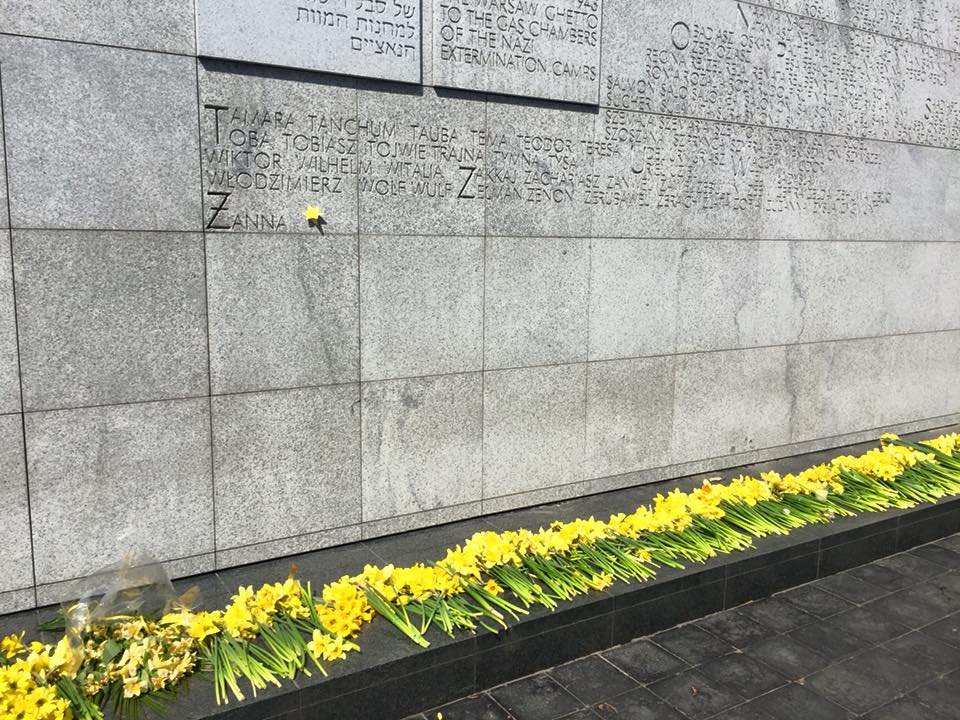
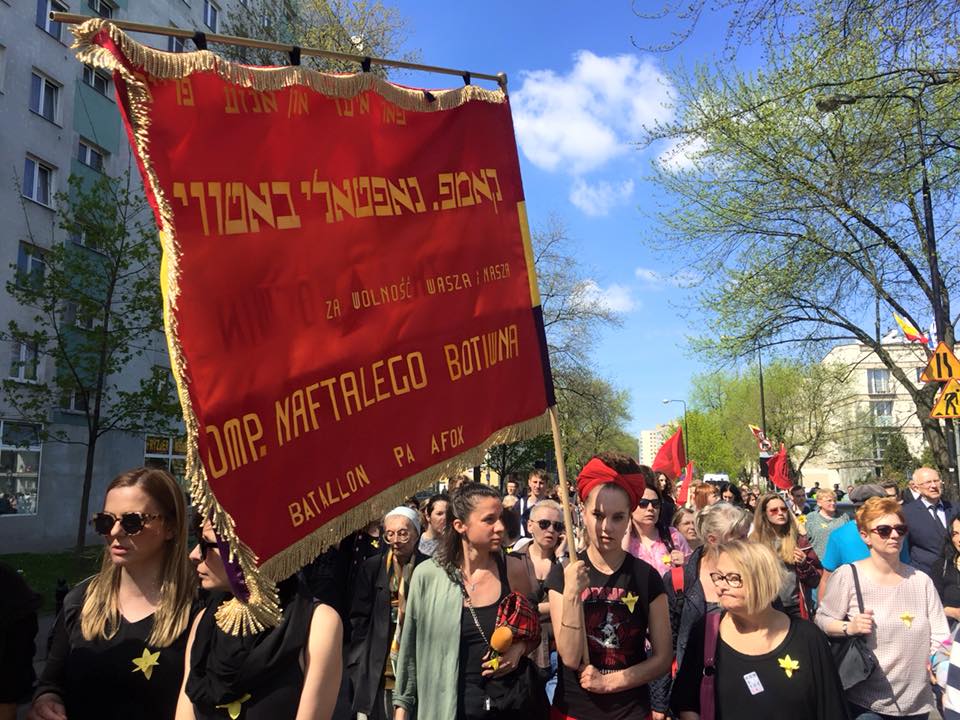
Although certain occasions are of a more international and official nature (e.g., 27 January and the March of the Living), while others are more local and unofficial (e.g., the ghetto dates), all of them prompt personal participation. Hundreds gathered again at Auschwitz II-Birkenau in January and then over 10 thousand joined in the March of the Living in April, marching from the Arbeit Macht Frei gate at Auschwitz I to the ramp at Auschwitz II. But in Kraków the annual March of Memory drew hundreds of locals of all ages and walks of life, as did an informal, grassroots-organized march in Warsaw to trace the valiant struggle of the ghetto fighters. Undeniably, there is a difference when tributes take place in the place where the memorialized events took place, and where one learns by actually following in the footsteps of perpetrators, witnesses, victims, and survivors.
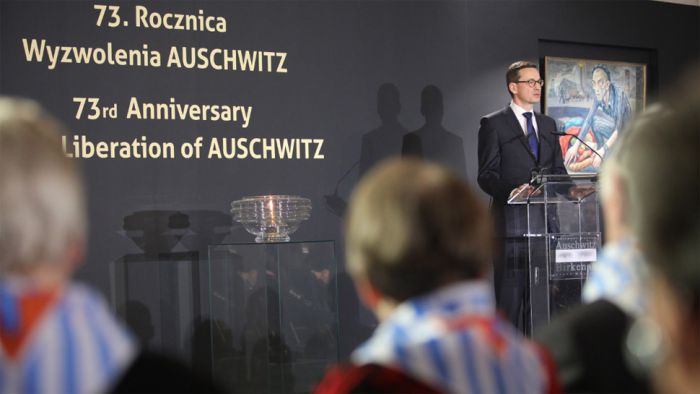
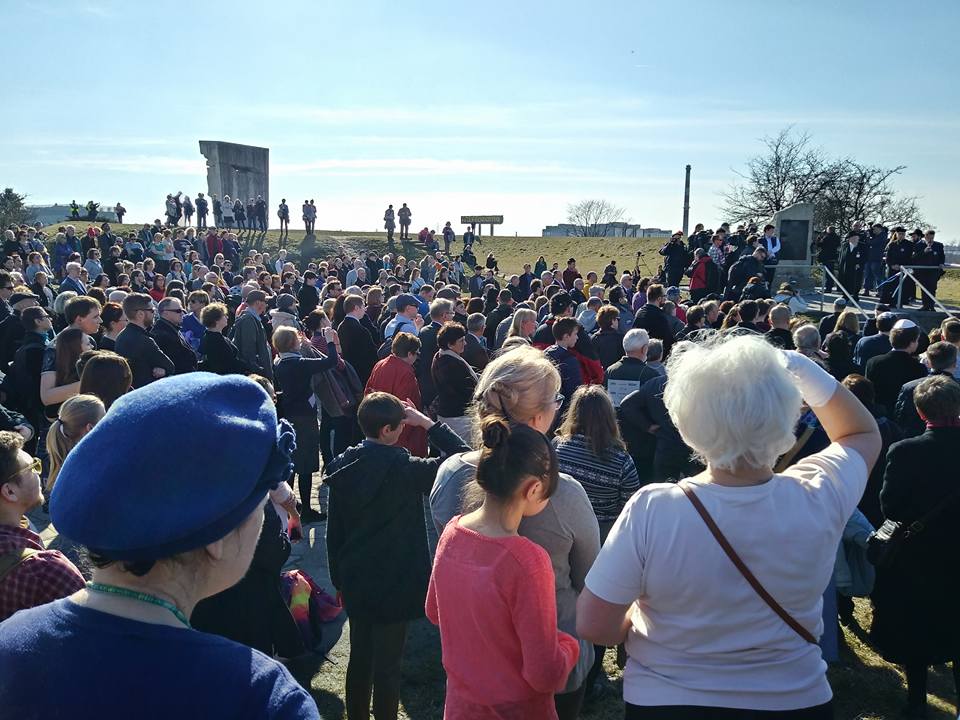
As a matter of course, the official and international events entail the involvement of the government. Hence in 2018 first the Prime Minister of Poland, Mateusz Morawiecki, spoke at Auschwitz II-Birkenau in January, and then the President of Poland, Andrzej Duda, after marching together with the President of Israel, Reuven Rivlin, spoke there in April at the March of the Living. Since the end of communism, a representative of the Polish government has always delivered a speech on such occasions. These acts are performed not as the guest of another country, but as the host. Certainly, regardless of one’s political affiliations, it is not easy to be the host of not one, but copious commemorations each year which recall, memorialize, and pay respect to the suffering and the dying. Every political address at these sites – by Polish or by foreign political leaders, and for better or for worse – comes to serve as a source in the teaching and learning of the Shoah.
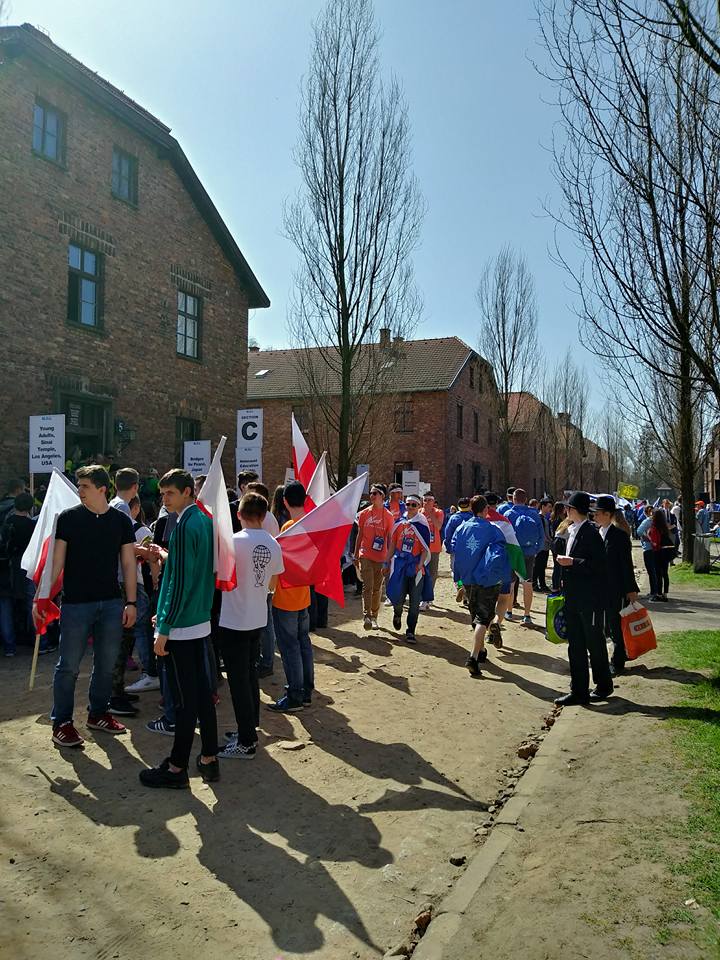
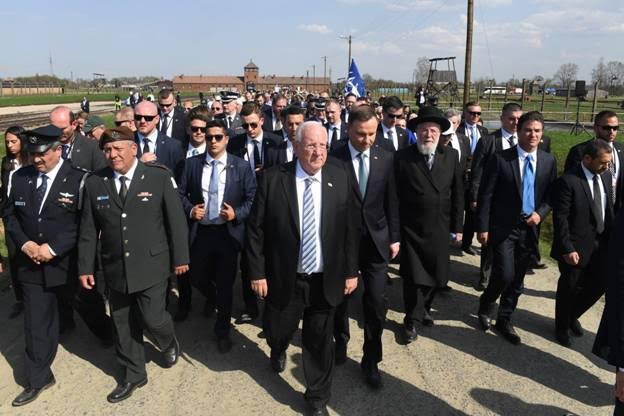
Over the years of living and working in Kraków, I have learned about the Holocaust from professors, experts, friends, and books. Yet, in fact, I have learned primarily from my surroundings, via a form of osmosis. I walk out of the classroom with my students and we are walking on the Shoah landscape: even if we are on the main market square and not yet in the former Jewish Quarter of Kazimierz or the former ghetto district of Podgórze. Conducting Holocaust study trips or teaching for the education department of the museum means that I have traversed the terrain of Auschwitz and Birkenau countless times. On more than one occasion, I have slept on the grounds of the museum. In 2004, a group of students from Claremont McKenna College also stayed within the confines of Auschwitz I – so immersed in the Shoah landscape that a student commented how, on the one hand, all had become normalized after a few days, but, on the other hand, absolutely everything had become a classroom in which he was learning.
My fellow scholars and I spend a great deal of time teaching in a university classroom. Importantly, many of us who teach the Holocaust where it happened are working with students who are not of Jewish descent. Although this was not the first genocide, it is the genocide of which there is global memory. Therefore my classrooms fill with students from literally around the world: from Japan, Taiwan, Singapore, and China, from Uzbekistan, Kirghizstan, and Azerbaijan, from Egypt and Turkey, and from North as well as South America. The students also come from the breadth of the European continent: from France to Estonia, from the UK to Ukraine.
One might ask for which and with which group is this teaching the hardest. Counter-intuitively, it is easier for the non-Europeans. On the one hand, they do need to quickly obtain and master basic facts, but this history for them is undeniably the past of a foreign country. The Shoah does not involve them directly: it is not their land, and does not touch their national history. It is hardest for my students from the Baltic States (Lithuania, Latvia, and Estonia), for my students from Belarus and Ukraine, for my students from Romania, Hungary, the Czech Republic, Germany, Austria, and Poland, but also from Norway, Belgium, the Netherlands, Italy, and France. After all, Vichy is associated with something other than a spa, while Drancy – a train stop on the way to the Charles de Gaulle airport – was one of the most infamous of transit stations en route to the death camps. Nonetheless, even if the Shoah was not perpetrated on one’s homeland, learning about the Holocaust where it happened can never be reduced to a lesson about a one-off historical occurrence in a no longer far-off place.
Teaching something where it happened can entail teaching in Philadelphia to show off the Liberty Bell or in Gettysburg to trace the footsteps of the soldiers who perished there. One of those events is easy to deal with; the other still painful. Still, both events are historically very distant and the emotions have been mostly processed. It is different with the Holocaust, not only because of its magnitude. Although they are a vanishing cohort, there are still perpetrators, witnesses, and survivors whose living presence keeps the Shoah in the forefront. When these persons live on or return to the Shoah landscape, the tragedy is rendered more tangible.
The Holocaust has been a subject I have been learning for over three decades and teaching for nearly two. On the one hand, it is extremely difficult to do this work on the Shoah landscape; on the other hand, it is a remarkable privilege to be able to do this specifically there. To illustrate this dilemma, permit me to cite another student from that same Pennsylvania group this year:
“I believe that seeing and learning about things while you are in the location that the event took place… makes you think about what you are learning much more deeply than if you were to be sitting in class seven thousand miles away learning about the same topic. In such a scenario, a person may be learning about the events that their teacher is telling them about, but it can easily be pushed to the back of their mind and forgotten about once the class bell ends the day. However, for the people living near an area where a tragic event took place, they are constantly reminded about the events that have unfolded there.”
Traversing this landscape and learning in it is a lesson remembered much longer than just the “pictures which speak a thousand words” in the internet. The latest study conducted by the Claims Conference regrettably shows that 41% of millennials in the USA believe that the number of European Jews murdered was 2 million or less, while 41% of all American respondents could not even identify Auschwitz. If the next survey is to disclose more encouraging statistics (that we are truly learning about this genocide and will be less likely to repeat such history) then – not just in the US, but around this globe – even more people need to truly experience the lessons where the very soil speaks. Fellow scholars as well as archivists, guides, activists, and so many engaged individuals across Europe will always be ready and willing to teach this in the classroom, but especially in the fields where it (and so many other human tragedies) unfolded.
The recent passage of a law in Poland that makes it a crime to accuse the Polish nation of participating in the Holocaust has cast a chill over Holocaust studies, and similar statutes are on the books in Lithuania and Hungary. (Academic research and teaching are excluded from sanctions under the Polish law, but journalism and public speaking are not protected.) Nevertheless, a Polish historian, Piotr Trojański, recently reaffirmed that the complexities must be taught without whitewashing and idealization, and historical events must be shown from several perspectives, not just one. It is best kept in mind that awareness – of the Shoah, but of so many other human crimes against humanity – is always shaped by people, and never successfully dictated by politicians. In any case, the landscapes will always speak the truth; we just have to listen and learn.
Dr. Annamaria Orla-Bukowska was visiting professor in the Skalny Center in Spring 2018. She is associate professor at the Institute of Sociology, Jagiellonian University, Kraków, Poland.
